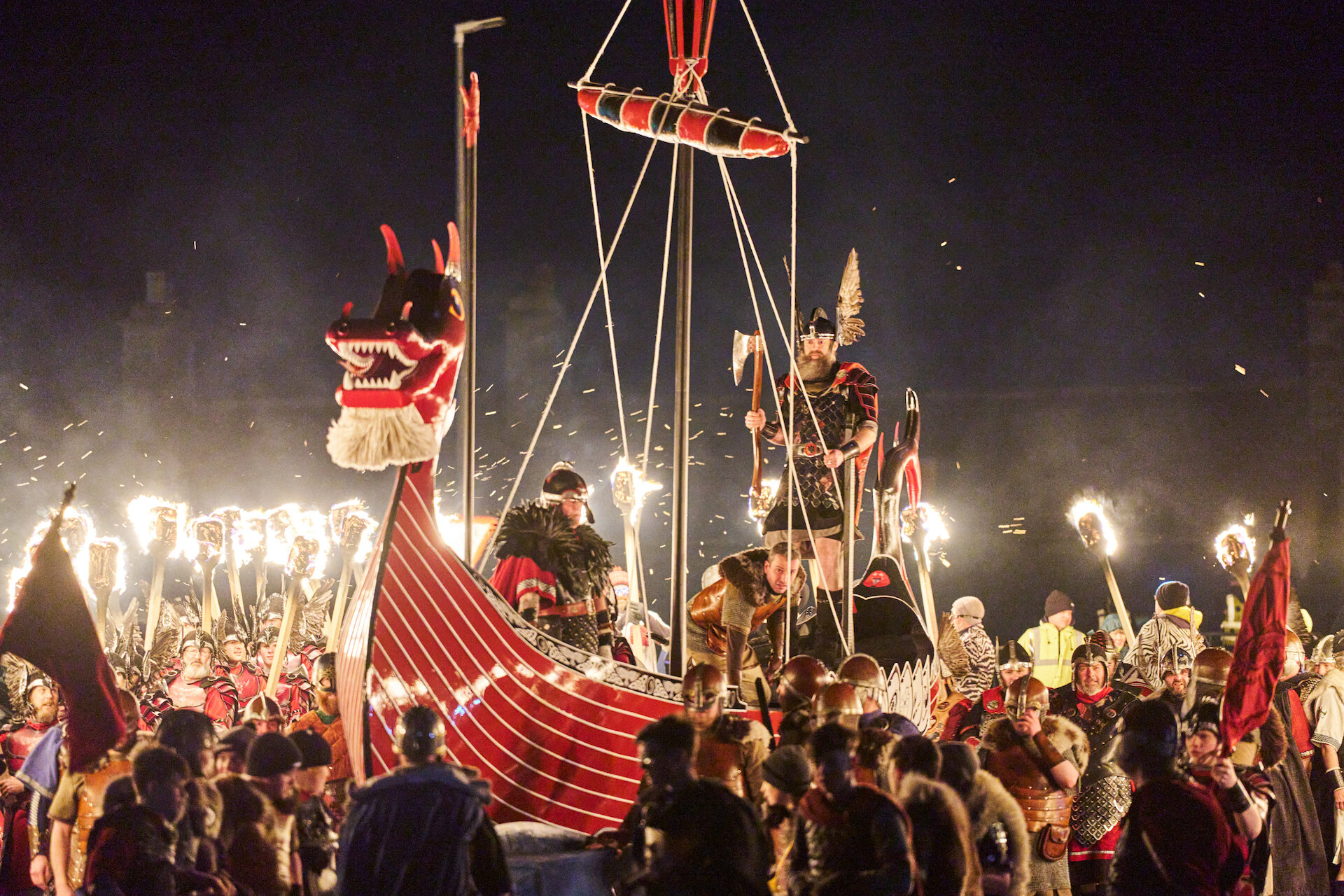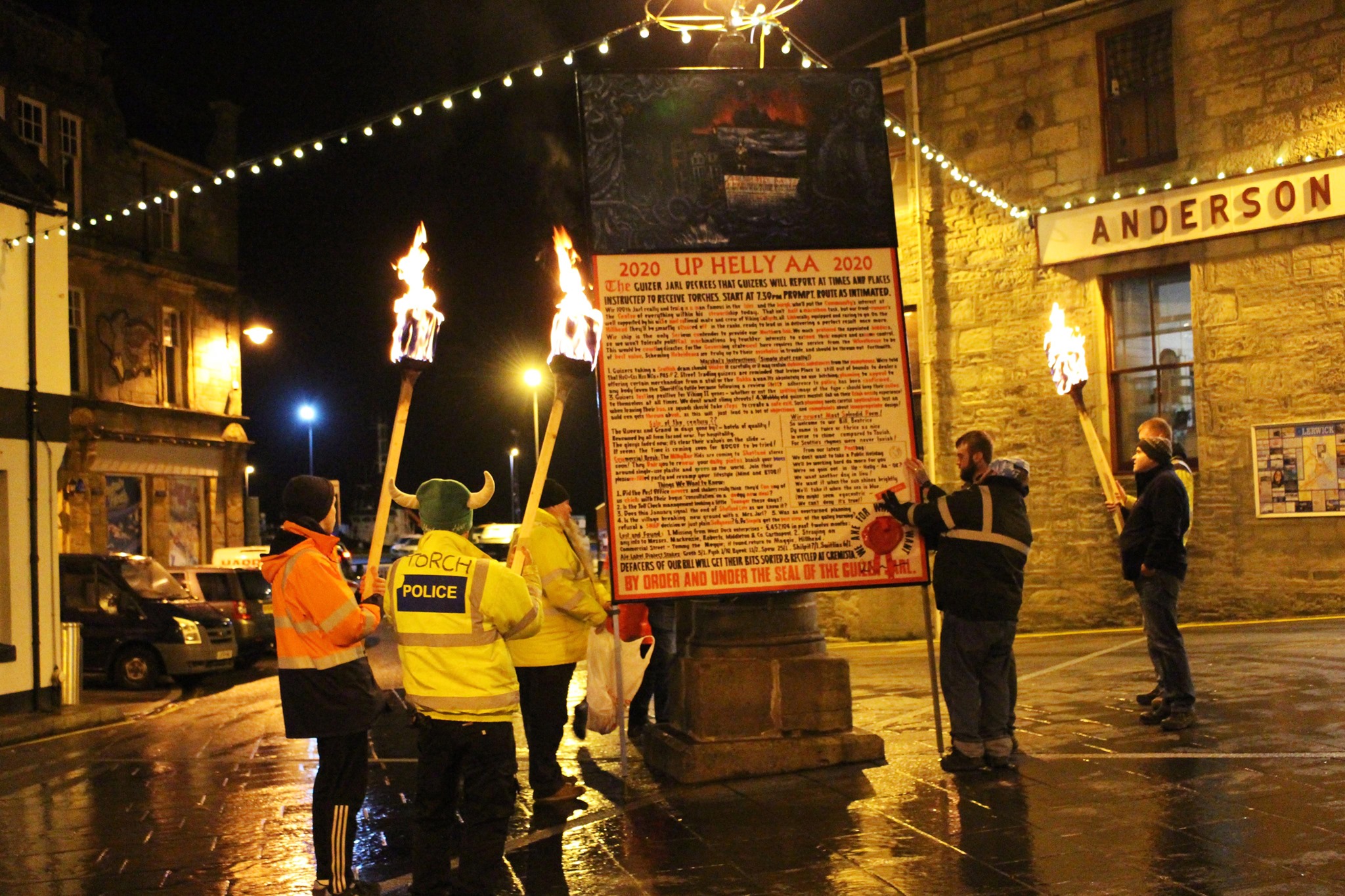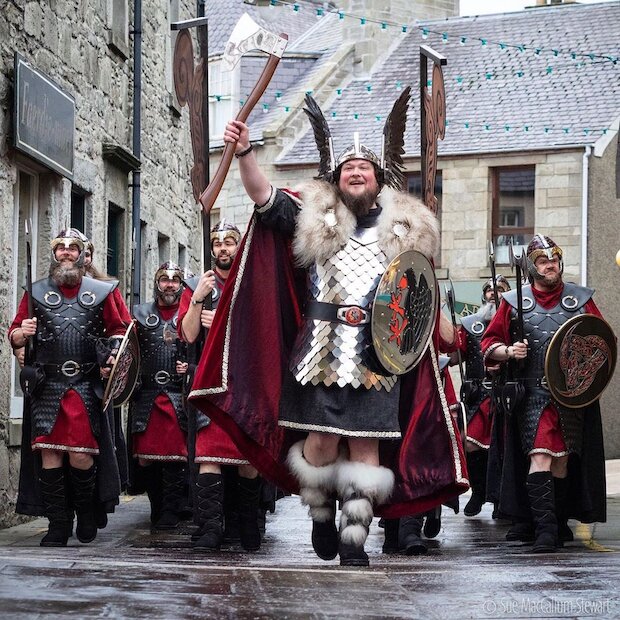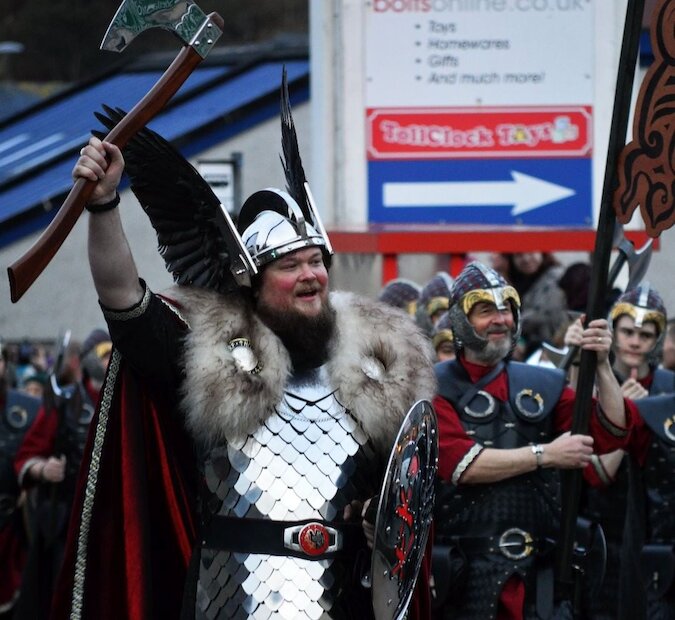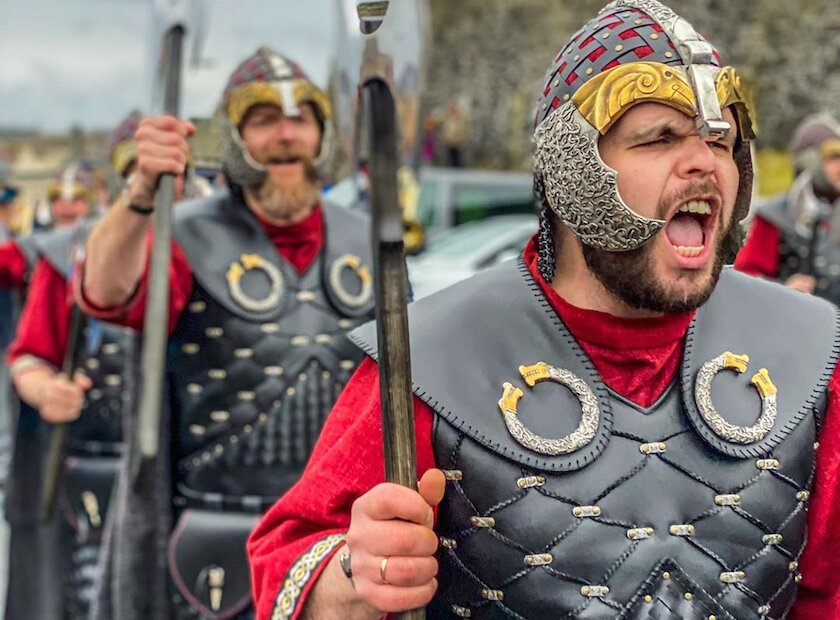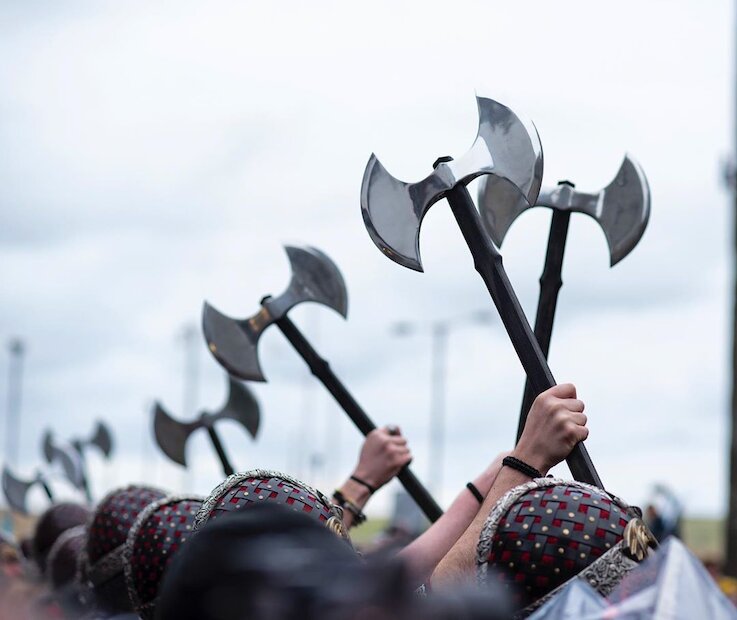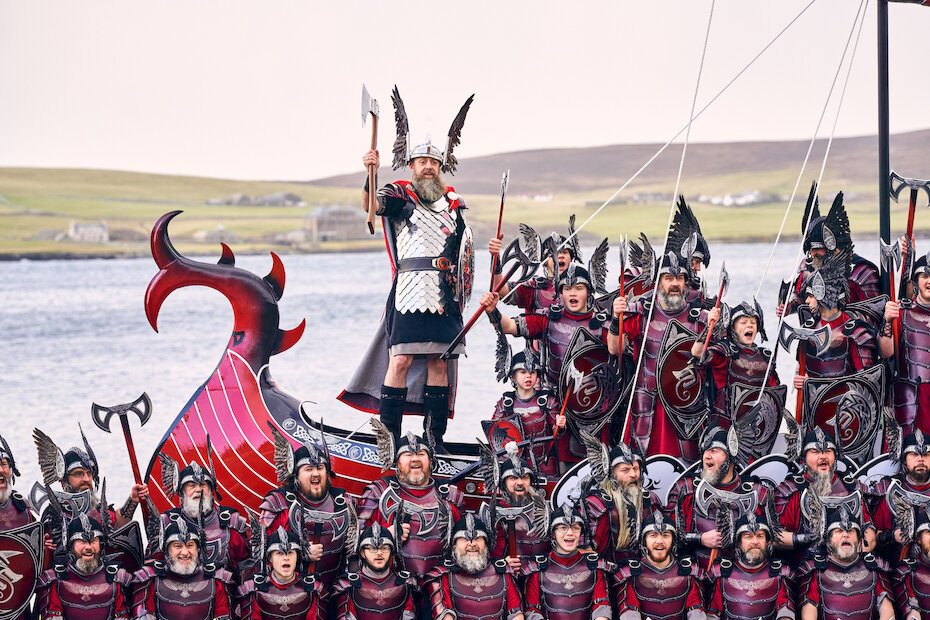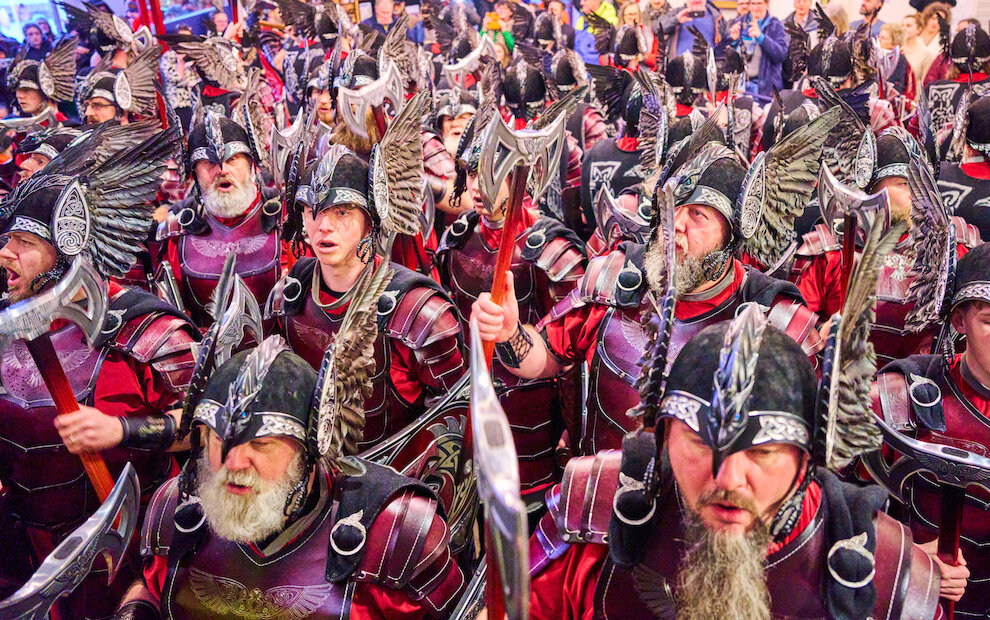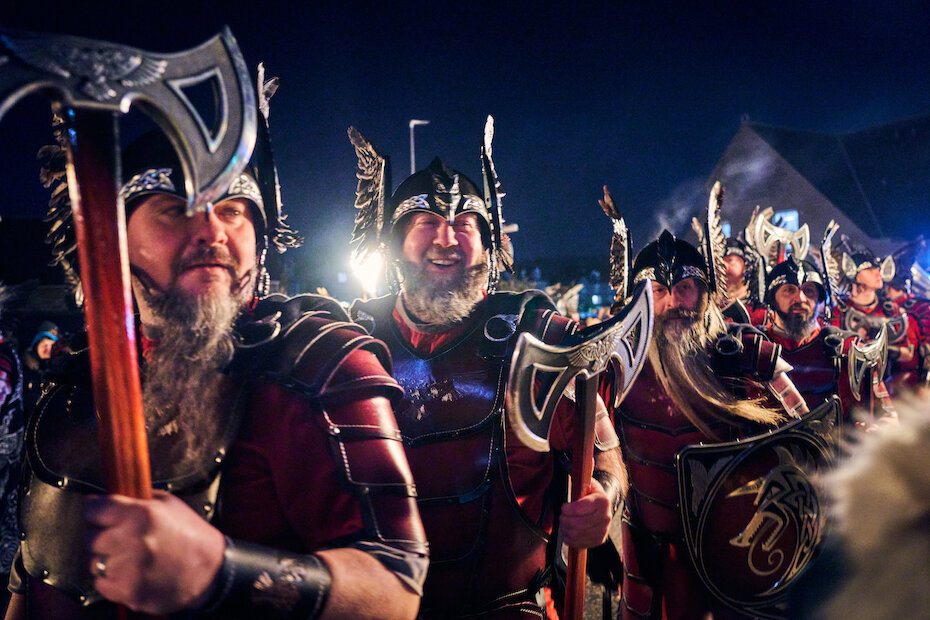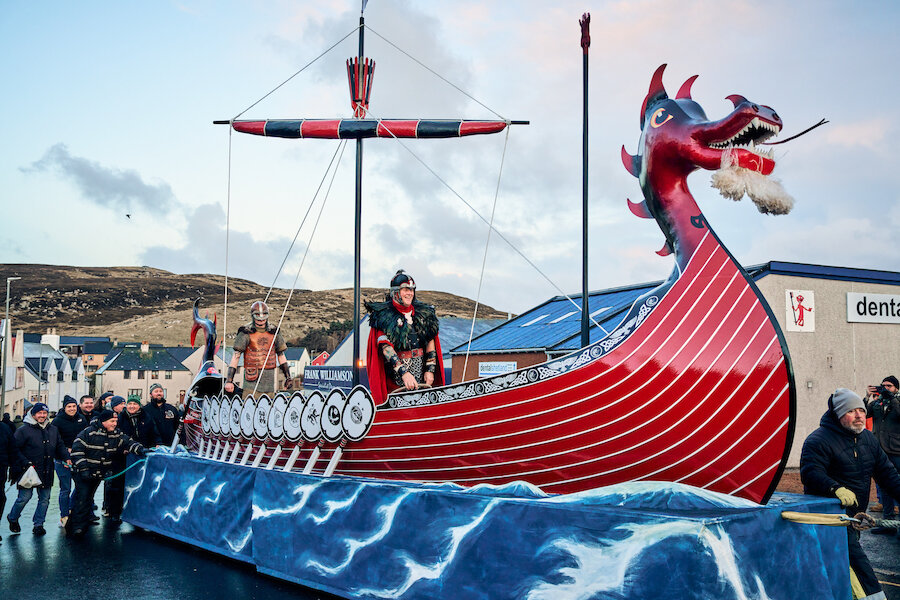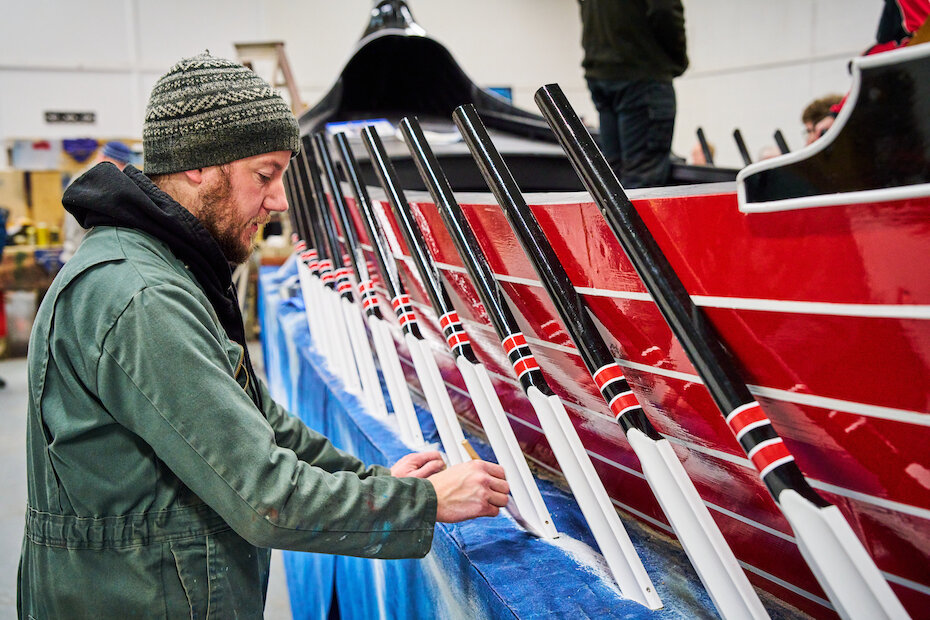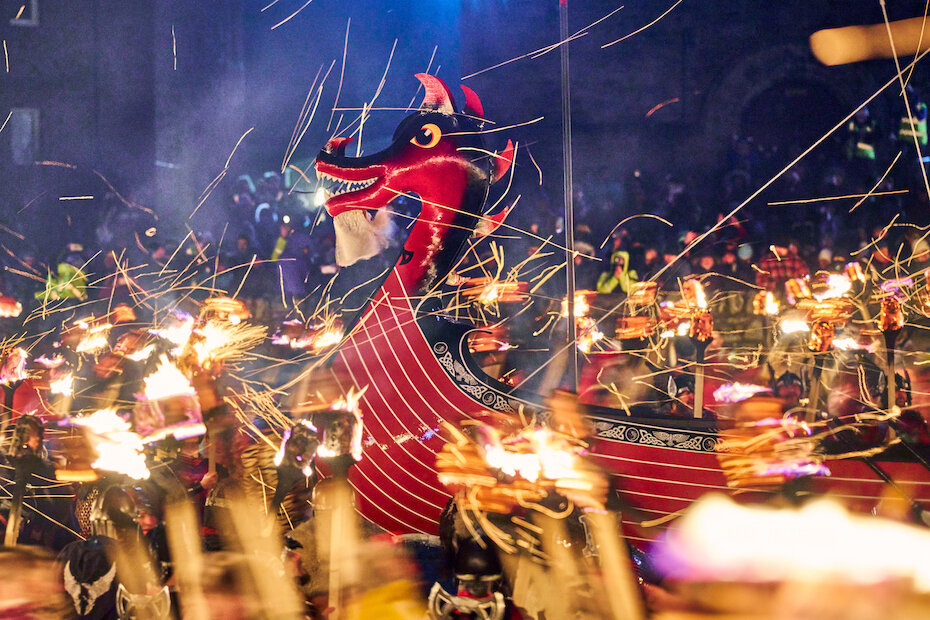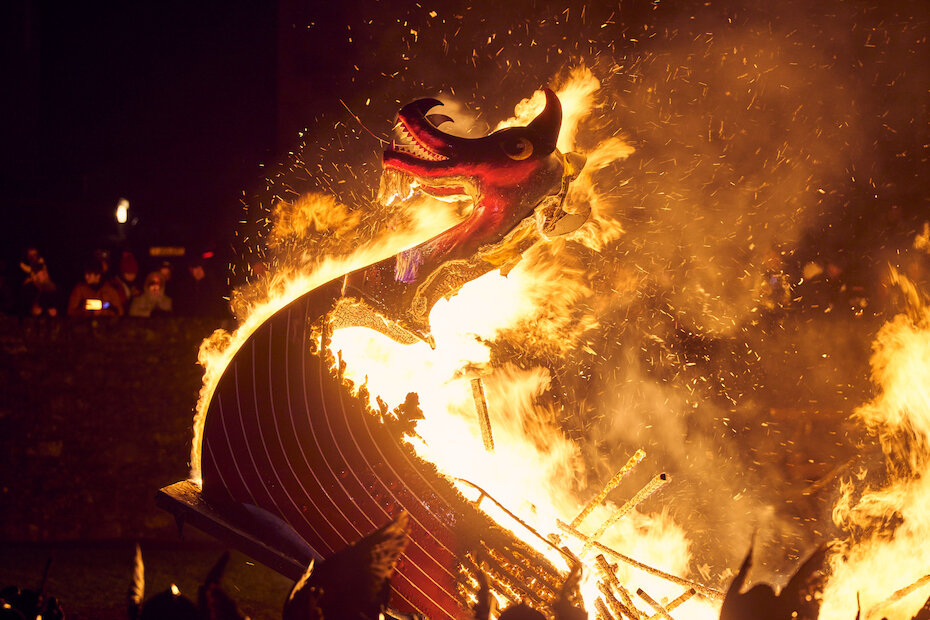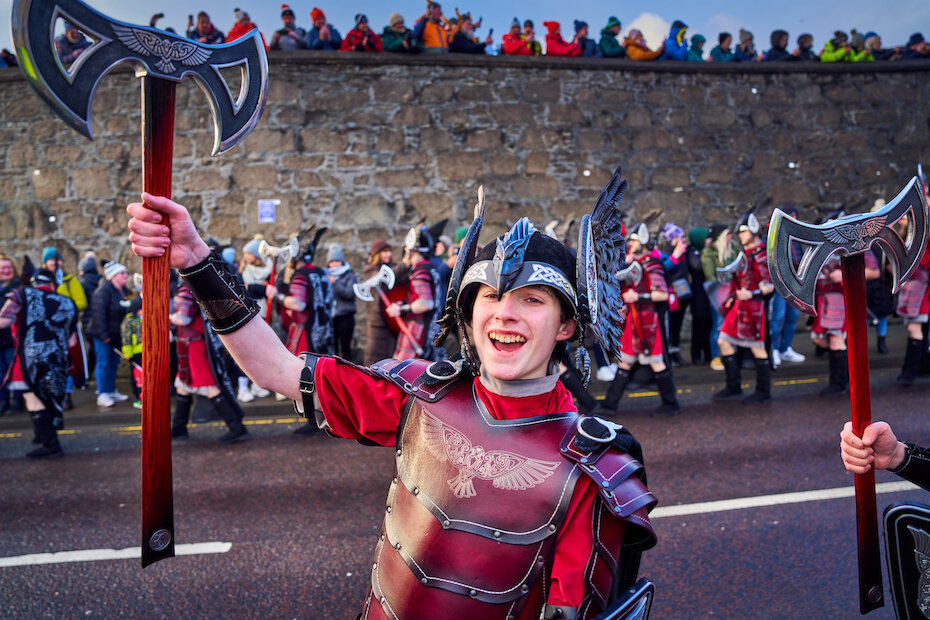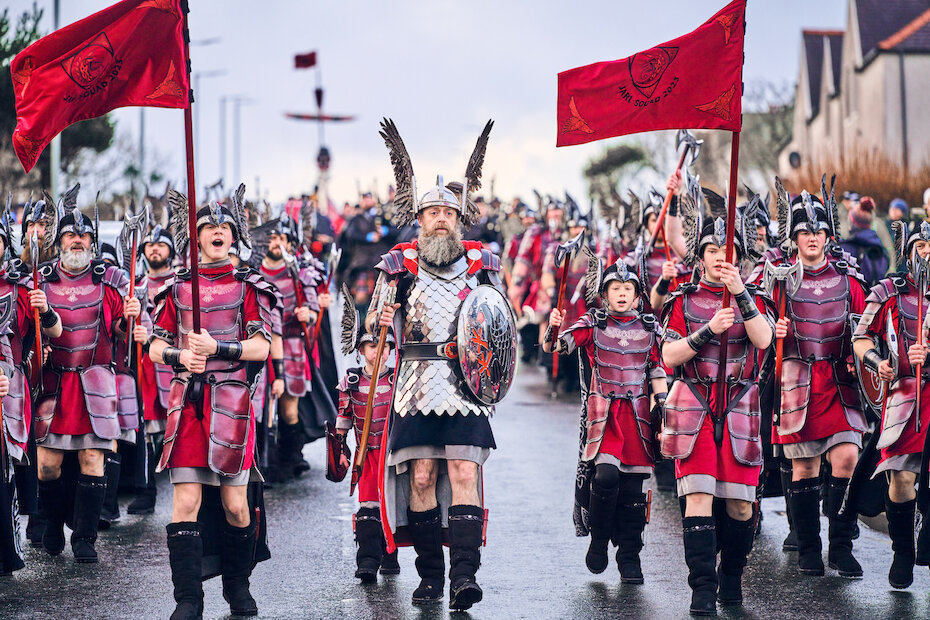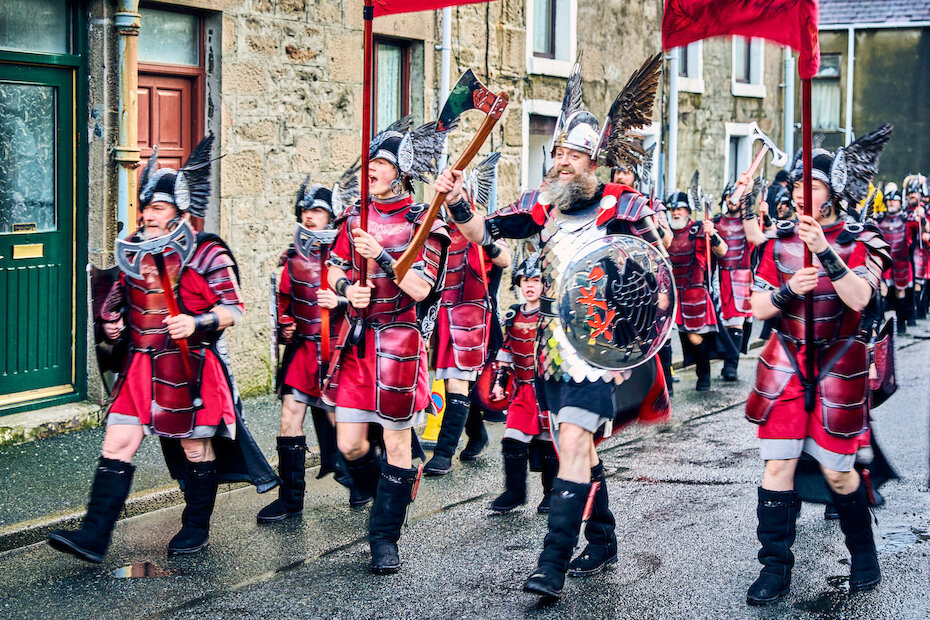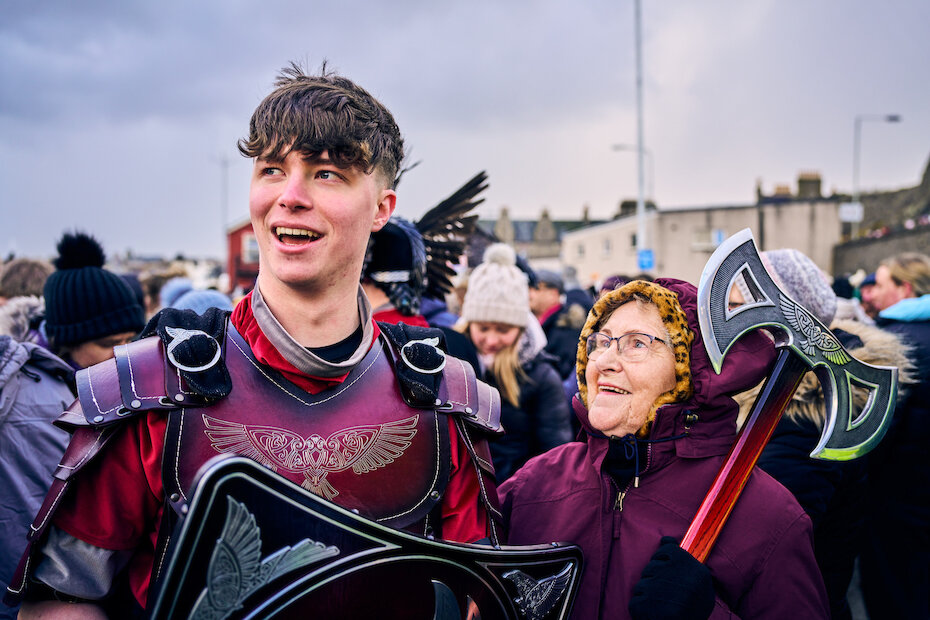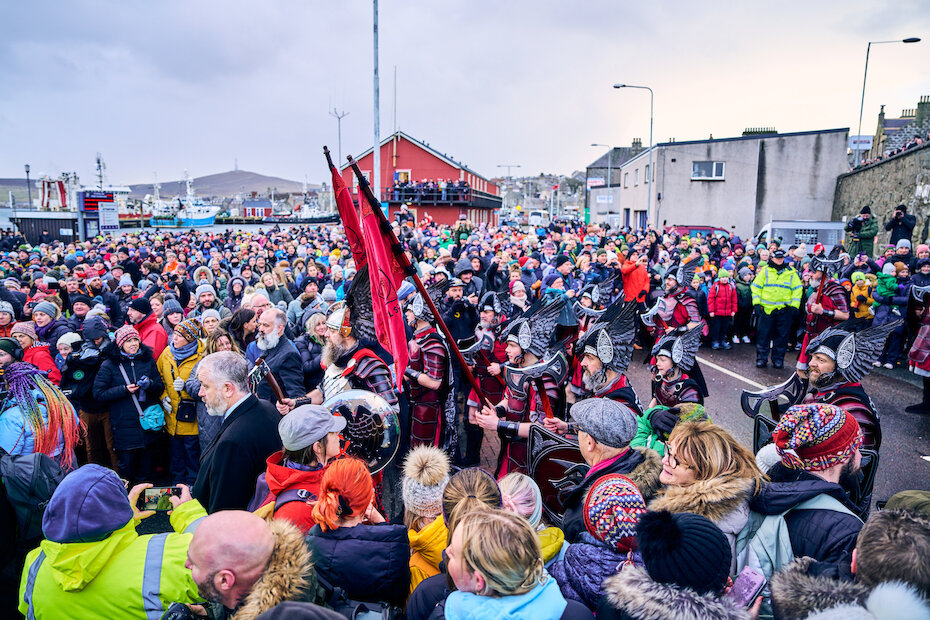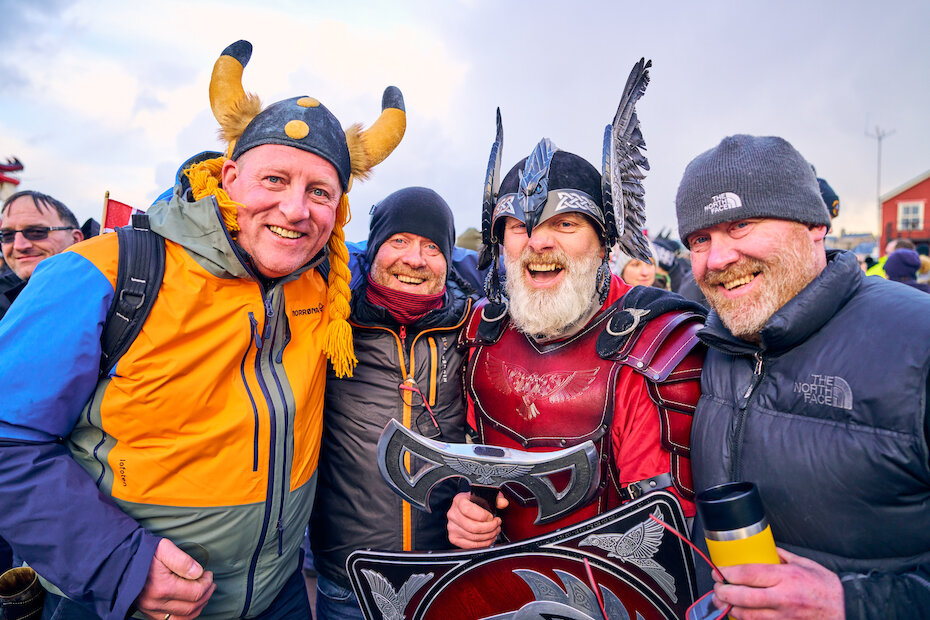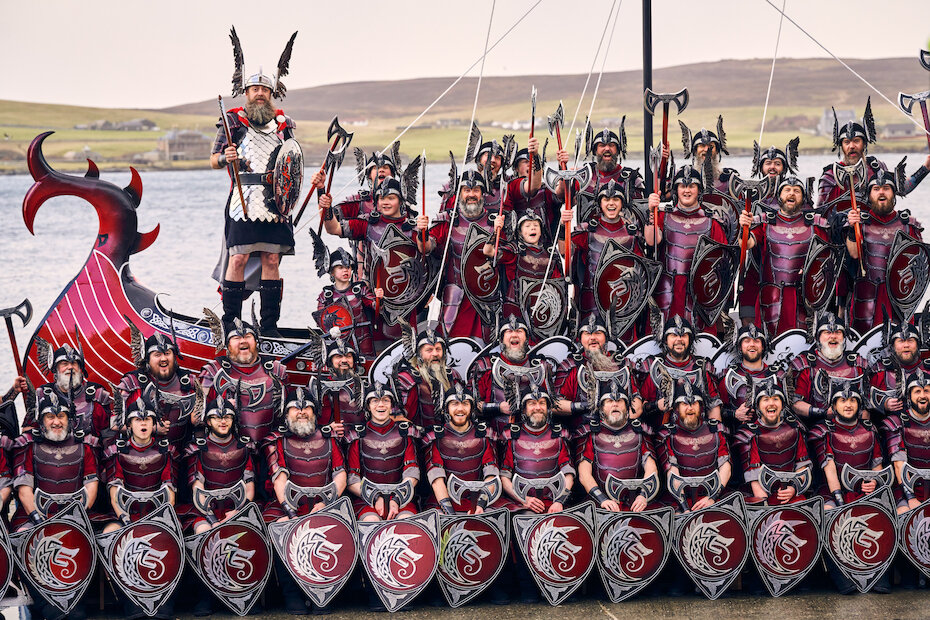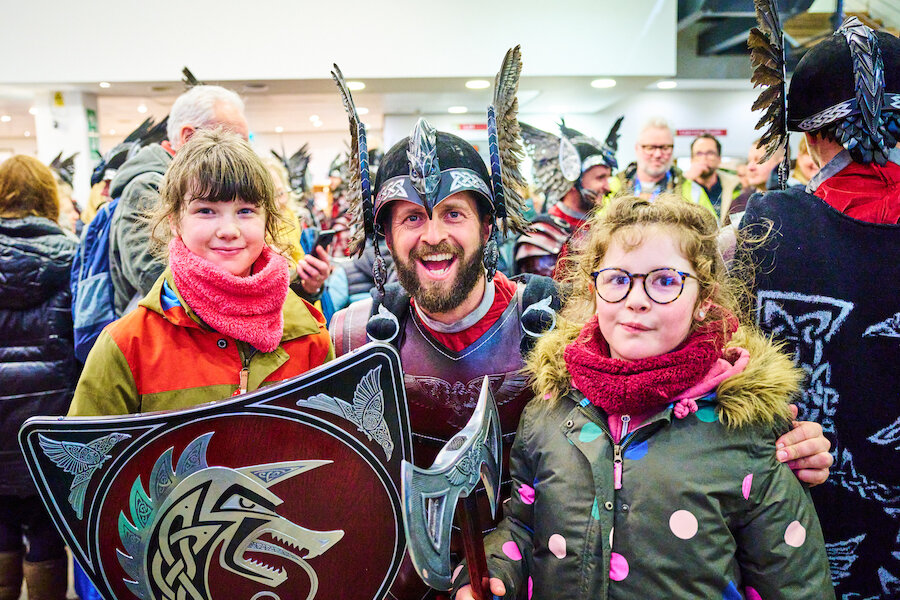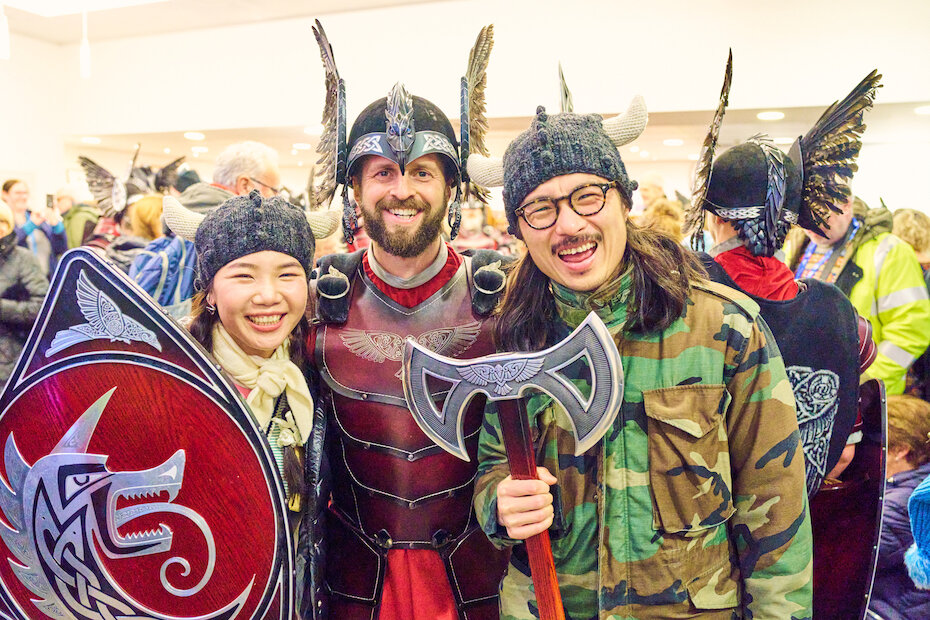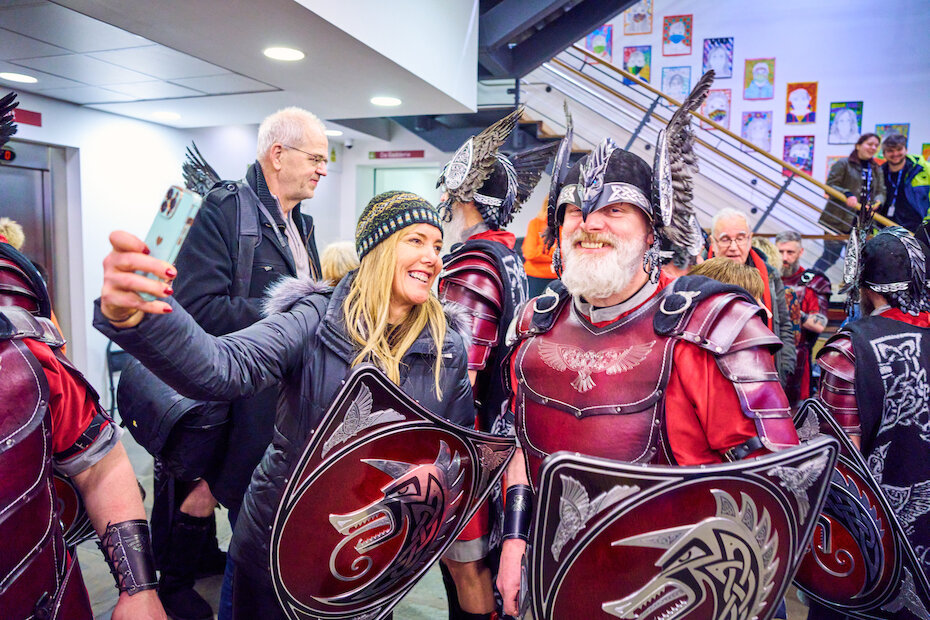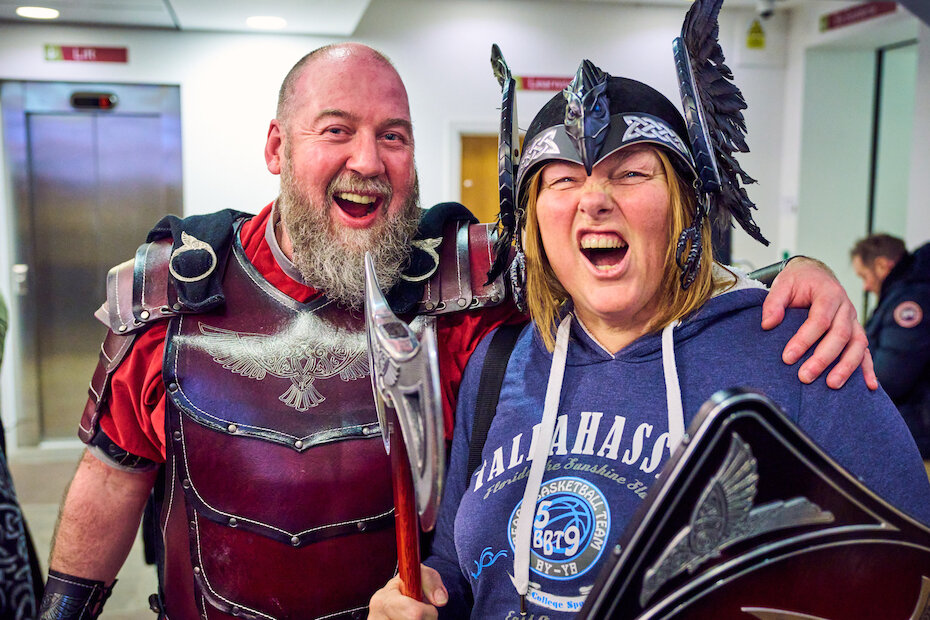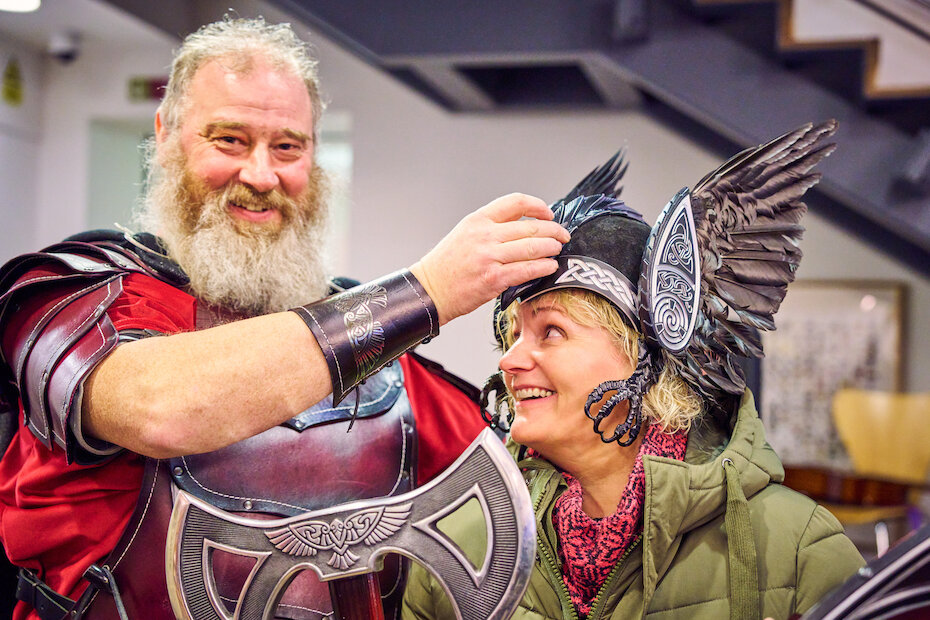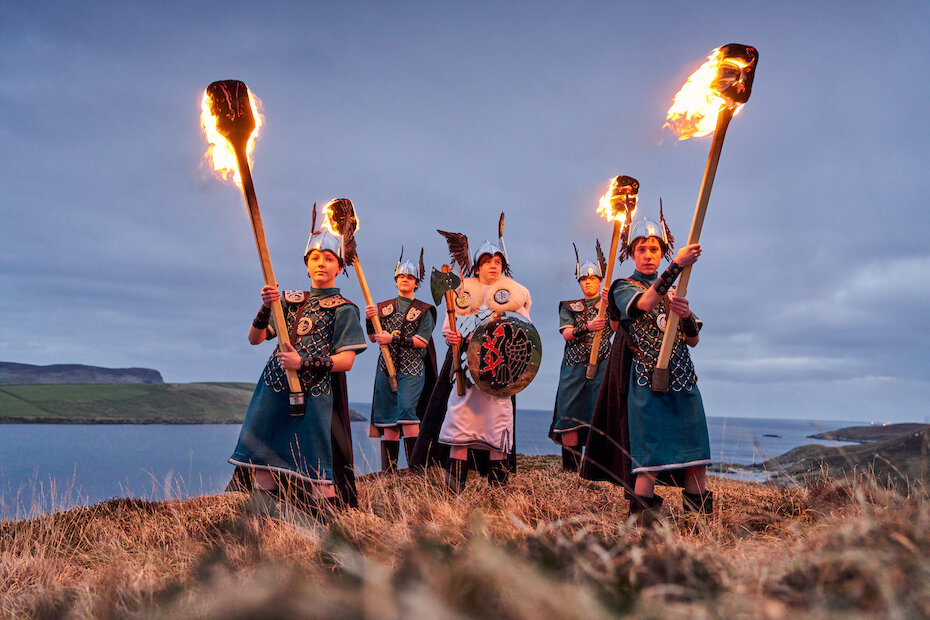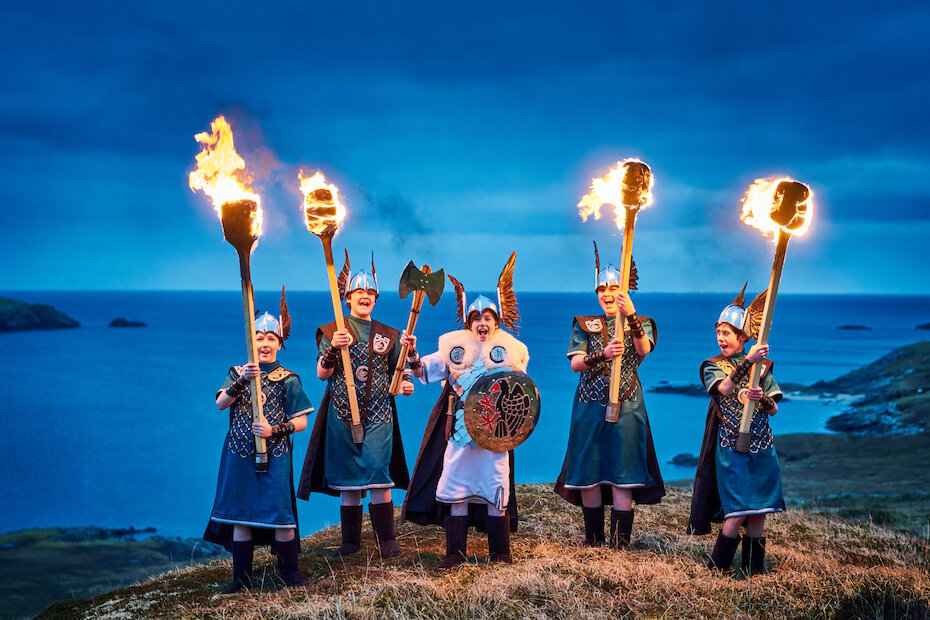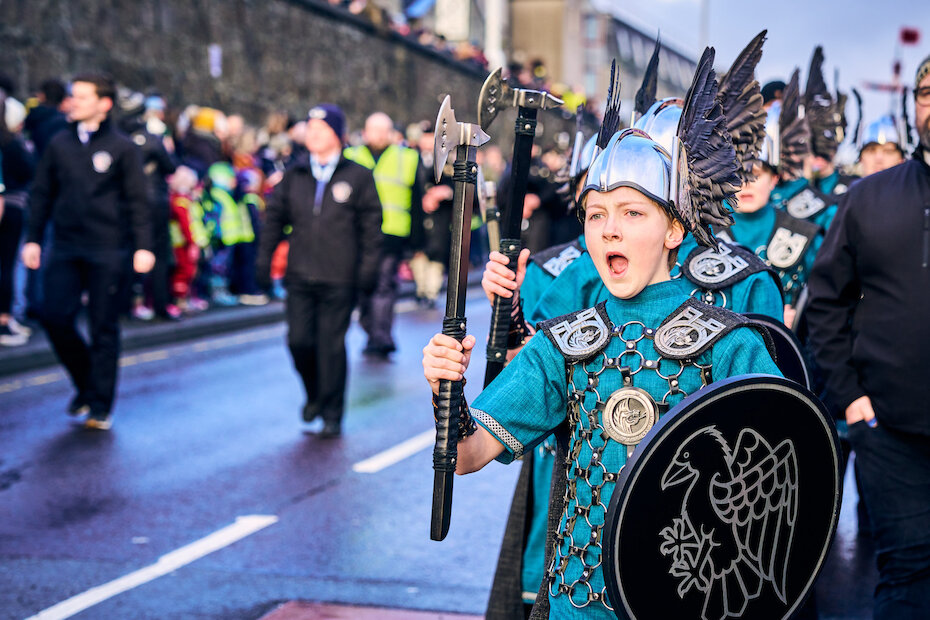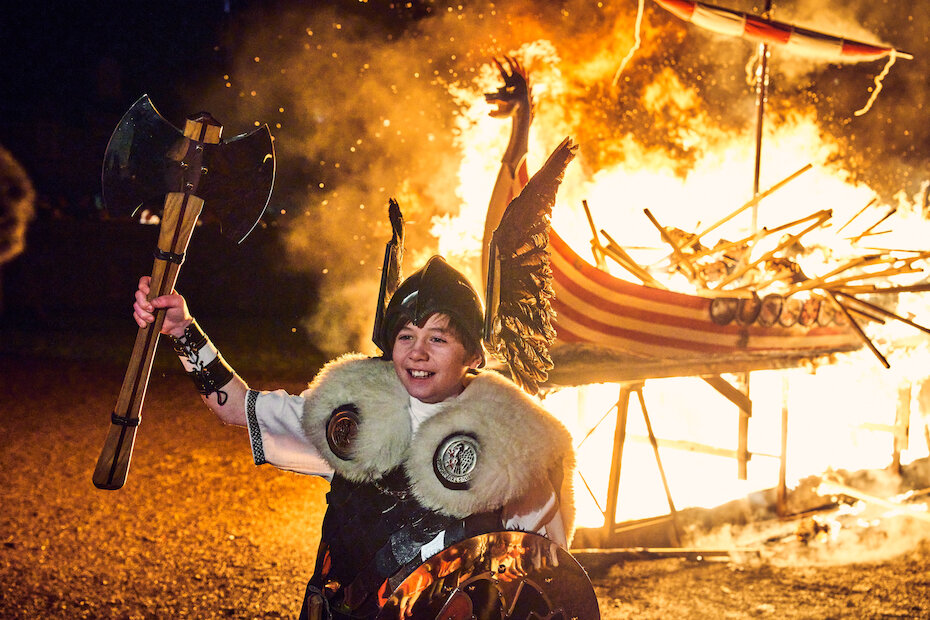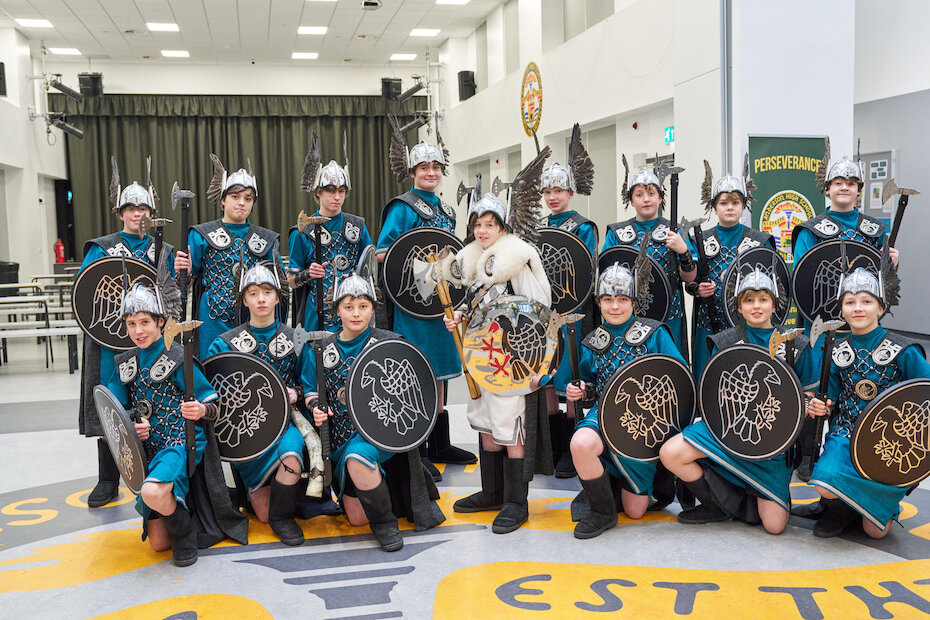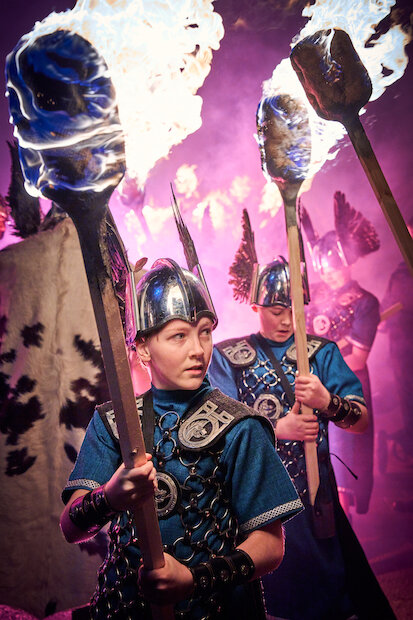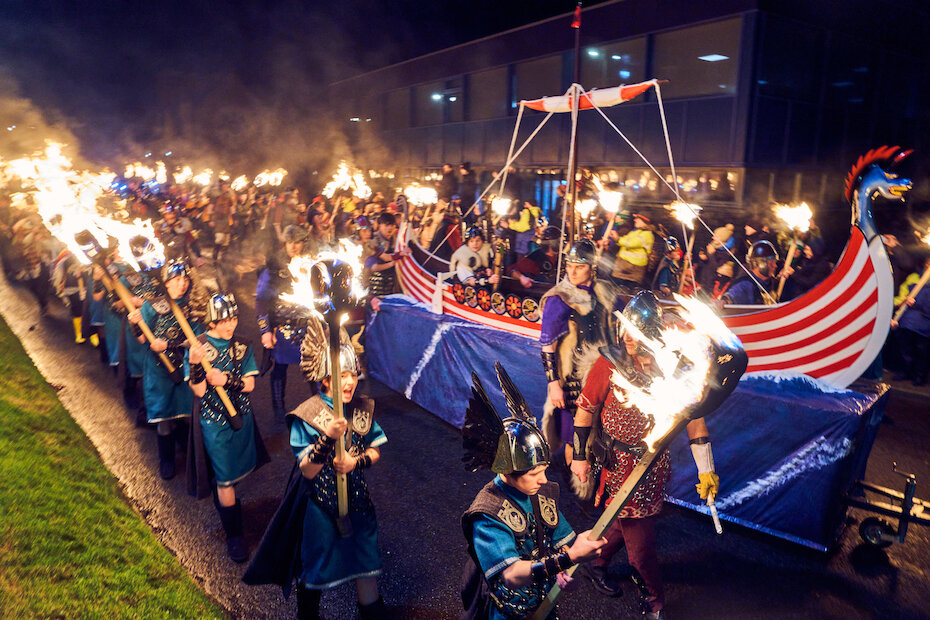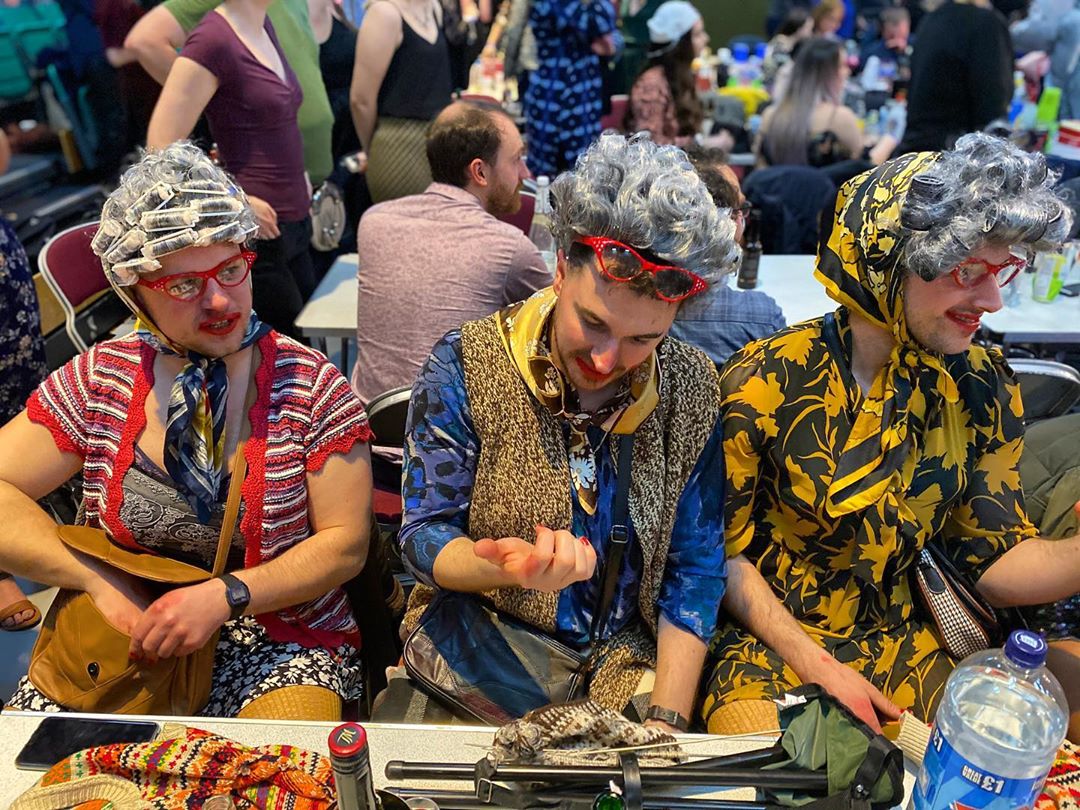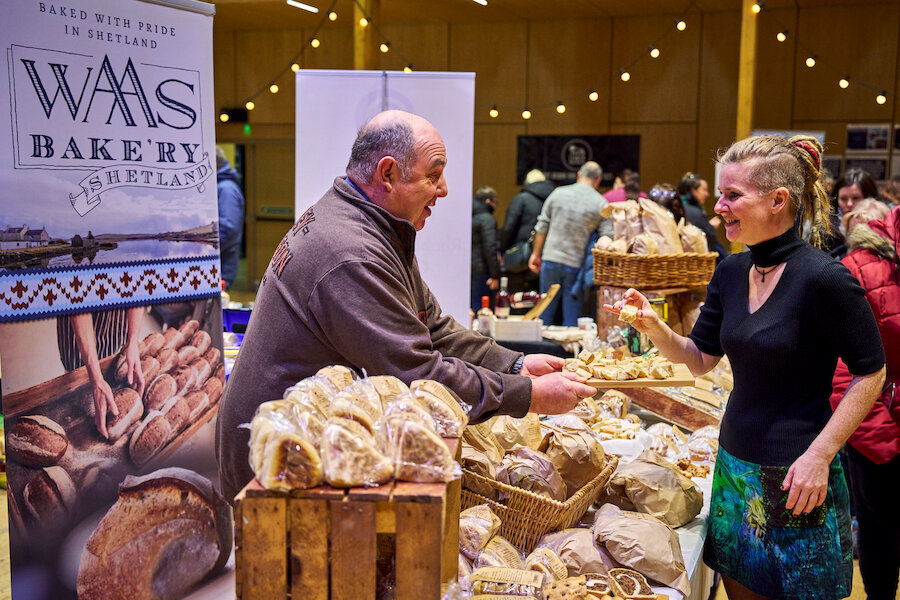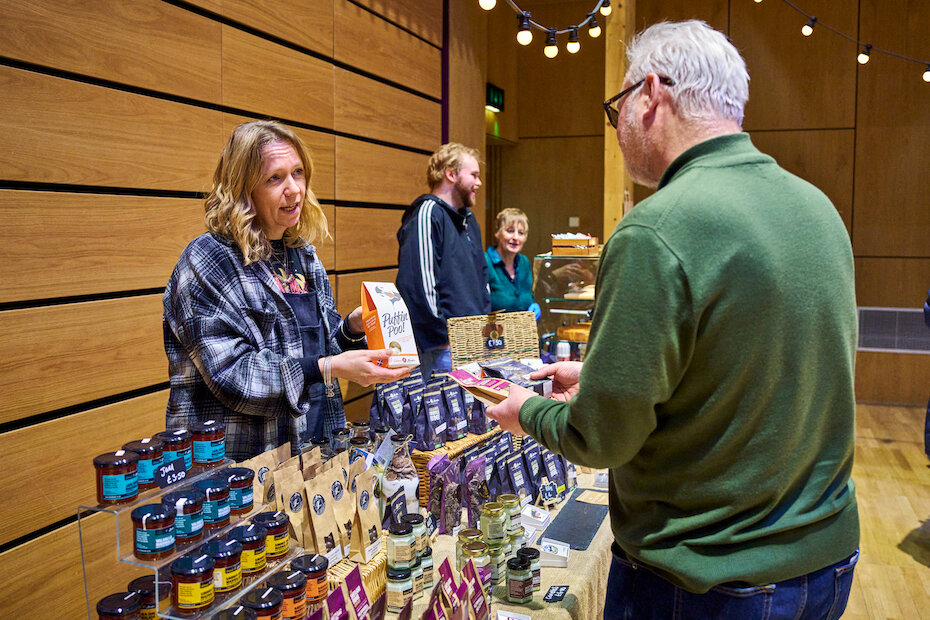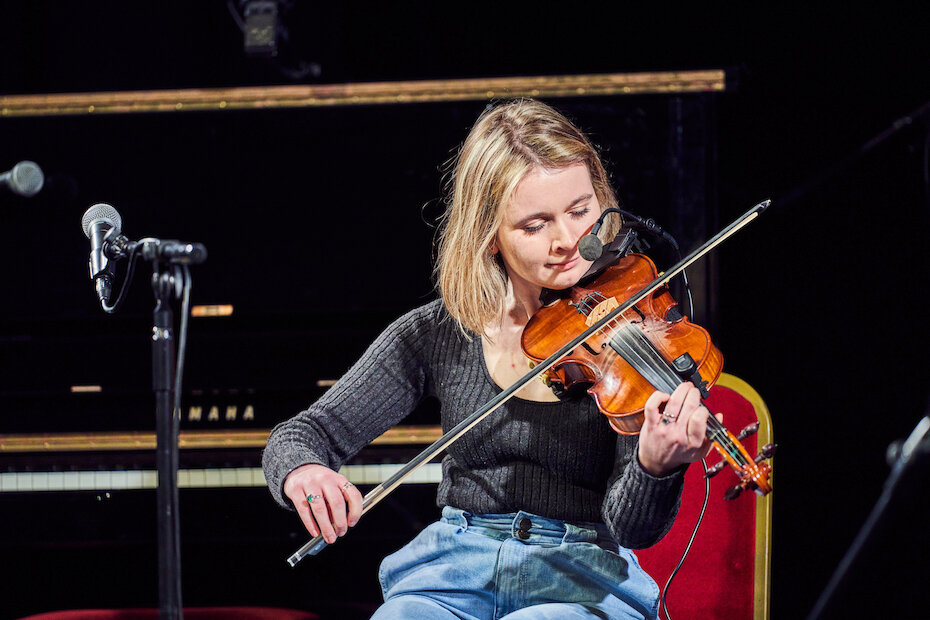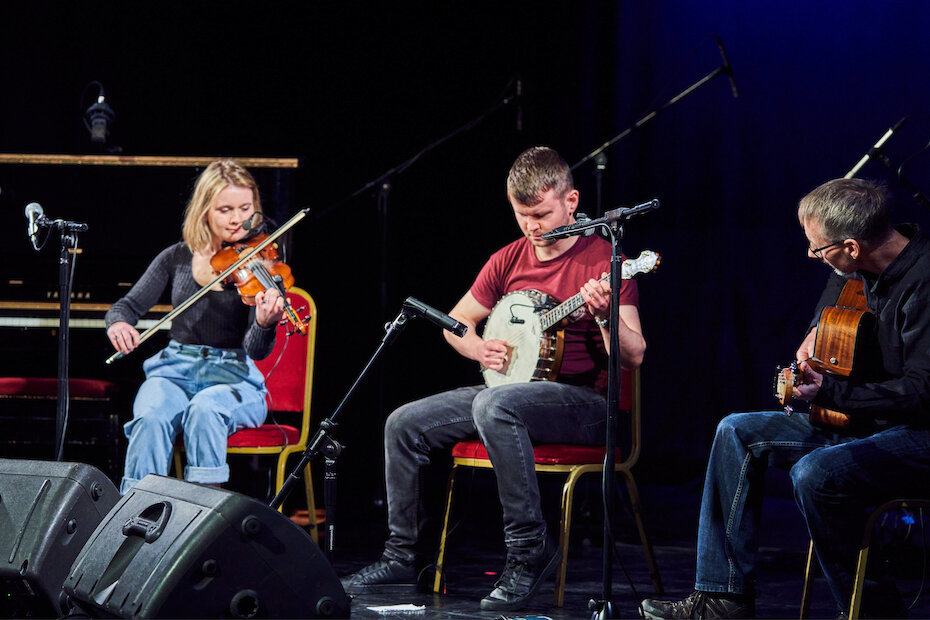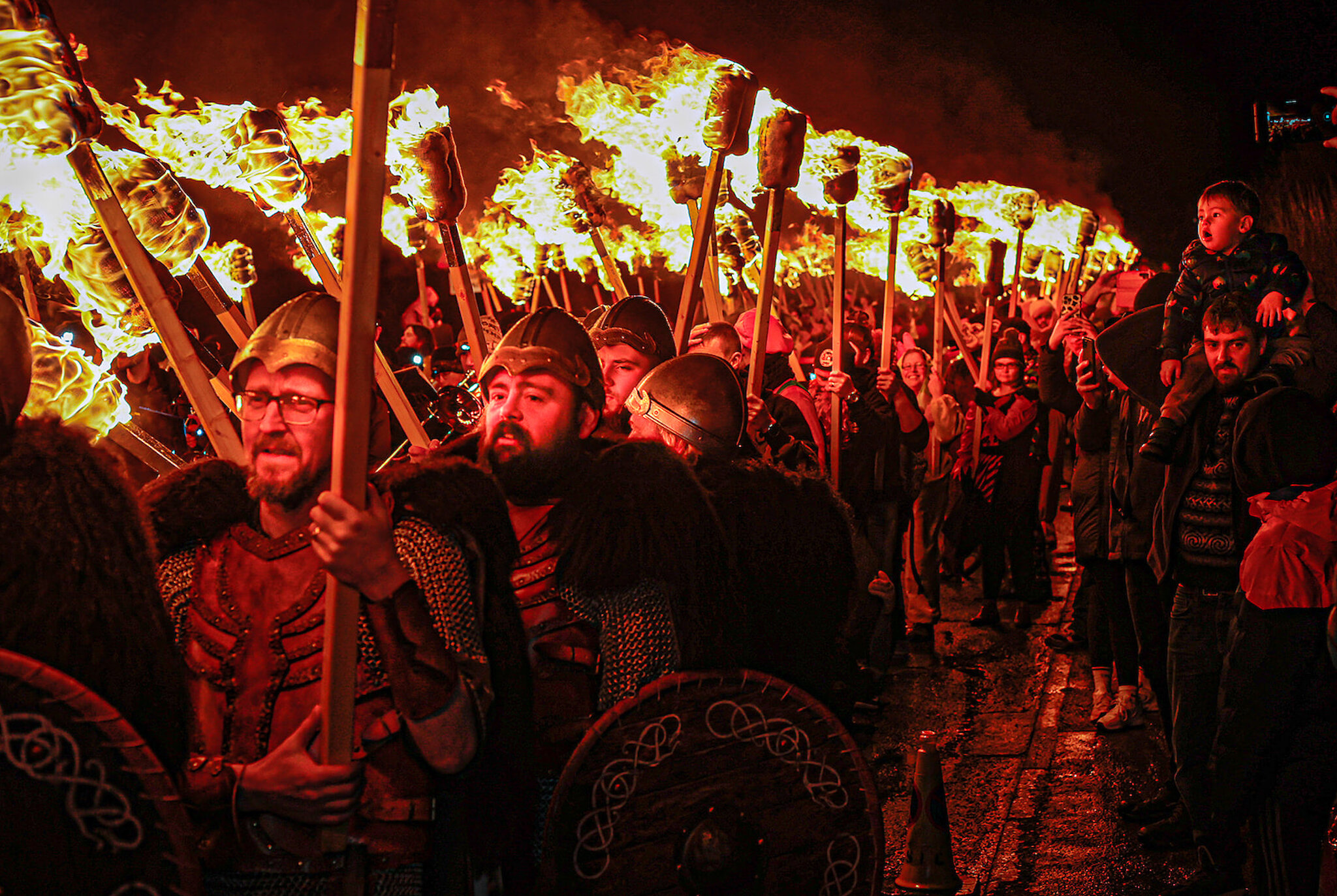The passing of winter and the lengthening of daylight hours have been celebrated in Shetland for centuries.
In the 1800s this important moment was marked by Lerwick residents dragging burning tar barrels through the streets. A celebration that was inherently dangerous. By the 1880s the festival was changing. Up Helly Aa as we know it was introduced along with a Viking Jarl’s Squad, torchlit processions and the burning of a replica longship known as a galley.
That tradition has continued ever since and grown so that there is now a whole season of fire festivals starting in early January and ending in mid-March. Lerwick Up Helly Aa, held on the last Tuesday of January, remains the largest and, for many, the most dramatic. The festival is led by the Guizer Jarl, or chief Viking, a huge honour for the chosen individual.
The Guizer Jarl is supported by a squad, all dressed in magnificent Viking-inspired suits made annually and only revealed on the morning of the event.
Each year Up Helly Aa attracts visitors from around the world, but what happens on Lerwick Up Helly Aa day? You’re about to discover and get an insight into why Up Helly Aa is so important to the community, and why it is about a lot more than Vikings.
